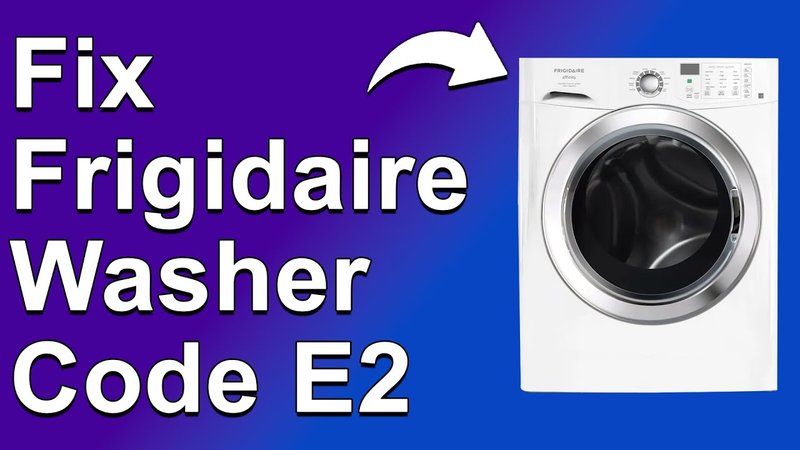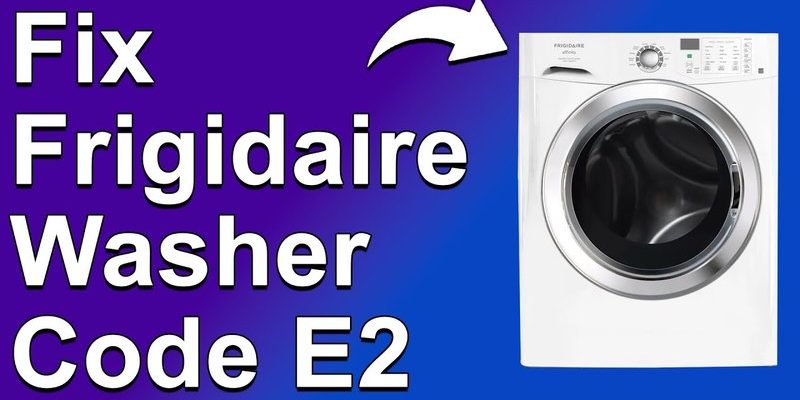
Think of error codes like the “check engine” light in your car. They indicate that something isn’t quite right under the hood, or in this case, behind the fridge door. The error code E2 on a Frigidaire refrigerator is pointing to an issue with the fridge’s thermistor, which is a bit like a thermometer for your fridge. It keeps track of the temperature and tells your fridge when it’s time to cool things down or turn off the chill. If it’s not working correctly, your fridge might end up too warm or too cold, neither of which is ideal for your food storage.
Understanding the E2 Error Code
So what’s actually happening when you see that E2 code flashing on your fridge? In the simplest terms, it means the refrigerator’s thermistor is malfunctioning. Imagine the thermistor as the brain’s temperature section in your fridge; it’s responsible for relaying temperature information to the control board—the decision-maker of your refrigerator. When this message isn’t coming through correctly, your fridge might overcool or not cool at all.
Why does this matter? Well, if temperatures inside your fridge aren’t properly regulated, it can lead to spoiled food. Milk might curdle, veggies could wilt, and nobody wants to eat a warm slice of cheesecake. Furthermore, improper temperatures can lead to increased energy consumption, hiking up your electricity bills.
What causes this problem? Sometimes, it’s just wear and tear. Over time, any part of an appliance might degrade or fail. Other times, it might be due to poor installation, where wires could become disconnected or damaged. Whatever the reason, addressing the issue promptly can save you from bigger headaches down the road.
Should You Ignore the E2 Error Code?
Here’s the deal: ignoring the E2 error code is a bit like hoping that a small pothole in the road won’t damage your car’s suspension if you just keep driving over it. Sure, the fridge may still work for a while, but running it with a fault in the temperature sensor can lead to bigger problems.
For starters, a malfunctioning thermistor means your food might not be stored at safe temperatures, increasing the risk of foodborne illnesses. It’s like leaving the refrigerator door ajar—cold air escapes, and perishables can spoil faster than you’d expect.
Moreover, a faulty thermistor can cause your refrigerator to work overtime, trying to reach the right temperature. This unnecessary strain can lead to more wear and tear, potentially shortening your refrigerator’s lifespan. Plus, it’s environmentally unfriendly and can lead to higher utility costs.
If you’re not a professional, tackling this problem might seem daunting. But thankfully, checking or replacing a thermistor isn’t as complicated as it sounds, and with the right guidance, you could potentially do it yourself. If DIY isn’t your thing, a professional technician can diagnose and fix the issue efficiently.
Steps to Address the E2 Code
Are you prepared to roll up your sleeves and take a stab at fixing this? First things first, safety is paramount. Always unplug your refrigerator before starting any repair work. You wouldn’t want any surprises!
If you’re comfortable with DIY repairs, locate your fridge’s thermistor, which is usually nestled inside the refrigerator near the back. Carefully inspect the wiring for any visible damage. Sometimes, simply re-securing loose wires can solve the problem. If the thermistor itself looks worn or damaged, replacing it could be the best option. You can often find replacement parts online or at appliance stores, along with instructional guides to help you through the process.
However, if this feels overwhelming, calling in a professional is a wise choice. They have the tools and expertise to quickly diagnose the problem and provide a solution, saving you time and potential hassle.
Tips for Preventing Future Errors
Once you’ve tackled the error, you’re probably wondering how to prevent it from happening again. Regular maintenance checks can be your best friend here. Think of it as giving your fridge an annual check-up, just like you would with your car or even your health.
Ensuring the refrigerator is correctly installed and not overloaded can also help. Overstuffing it can block airflow and strain the cooling system. Keep an eye on the door seals, too – they should be tight and free of cracks to maintain optimal temperature inside.
Finally, it never hurts to keep an ear out for unusual noises or changes in cooling performance. It’s like listening to your body when something feels off. Early detection can prevent minor issues from becoming major headaches.
In summary, while the E2 error might seem like a minor inconvenience at first, it’s a sign that shouldn’t be ignored. Tending to it promptly ensures your fridge remains the reliable kitchen helper it’s meant to be. We all want our food kept fresh and safe, without the worry of unexpected repair bills. So when your fridge calls out for help, why not answer?
